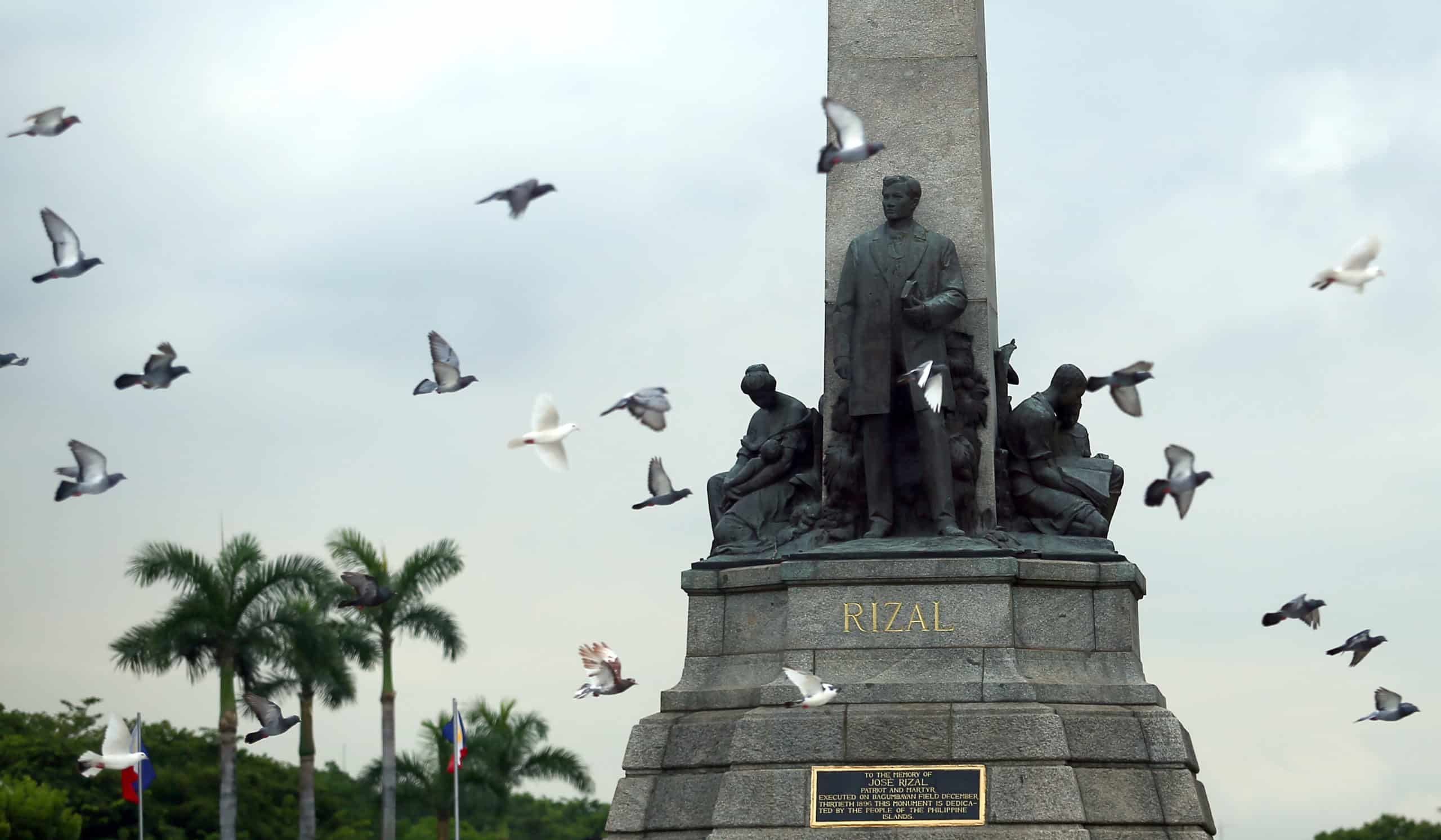'Ang kabataaan ang pag-asa ng bayan,' and what Jose Rizal means to the youth
"Ang kabataan ang pag-asa ng bayan (The youth is the hope of the motherland). "
This is one of the immortalized lines of Dr. Jose Rizal from the 1879 Spanish poem "A la Juventud Filipina" (To the Filipino Youth).
To 33-year-old radio broadcaster Hajji Kaamiño, the youth can be an achiever like Rizal, in the academic and national scenes, starting with being the voice of the less privileged.
Dr. Jose Rizal achieved academic excellence and was a staunch critic of the government during his time. The youth of today can follow Rizal's footsteps by taking the lead in upholding the principles of social justice, he said.

Campus journalist Mark Romero, 21, thinks the youth must seek a deeper understanding of Philippine history and advocate the improvement of the country's sociopolitical climate.
As we, who are part of the youth, would play an integral part of that effort, we should also be very familiar with our roots and our history. That will help guide our steps toward doing what’s best for our country, he said.
Another student-journalist, 20-year-old Jerica Masculino, believes the youth are already participating in making positive change in the country as evidenced by young people openly making their stand on social issues by joining rallies and being outspoken about their views.
"Many of us have become aware of the lack of justice, so many of today's youth are ready to fight for the future because we and the future generations will benefit from being free of a bad system," she said.
"Hindi kami ang kinabukasan ng bayan, dahil kami ang ngayon na bayan (We are not only the country's future, we are the country now)," she said.
'National hero'
Jose Rizal, also known as Pepe, was born in Calamba, Laguna, on June 19, 1861. He was part of a group of Filipino Ilustrados who called for peaceful reform of Spain's colonial rule in the Philippines.
While in Europe, Rizal wrote about the discrimination that accompanied Spain's colonial rule of his country. Among his famous works are "Noli Me Tangere" and "El Filibusterismo."
He returned to the Philippines in 1892 but was exiled to Dapitan by Spanish authorities. He was convicted of sedition and was executed on Dec. 30, 1896, at the age of 35.
Despite his heroism, Rizal has not been officially declared the Philippines' "National Hero." Many, including Kaamiño, believe Rizal deserves such a recognition.
"He had set an example of a bloodless revolution against the Spaniards. He was one of the great minds in Philippine history," he said.
Romero and Masculino said they were "surprised" when they learned that Rizal was not an official national hero since his face is everywhere.
"I grew up thinking that Jose Rizal was our official National Hero because that's what my teachers in school and the elders around me taught me. His face is on the one-peso coin and many monuments, one of them erected in Manila, have been built to honor him" Romero said.
"The young people already know that he is our hero. For me, today's young people really have in their minds that Jose Rizal is our national hero, and that cannot be removed from their minds, whether he has been declared or not," Masculino added.
Rizal is one of the nine Filipino heroes in the list of the now defunct National Heroes Committee which was created in 1993 during the administration of President Fidel Ramos. The committee was tasked to study, evaluate and recommend Filipino national heroes to recognize their heroic character and remarkable achievements for the country
Despite this, the Philippines has always recognized Rizal's heroism. Based on the National Historical Commission of the Philippines (NHCP) website, the observance of Rizal Day goes back to the decree issued by Gen. Emilio Aguinaldo on Dec. 20, 1898, declaring Dec. 30 as the anniversary of Jose Rizal's martyrdom and also "a national day of mourning," for Rizal and other victims of the Spanish dominion throughout its three centuries rule.
The first celebration of Rizal Day was held in Manila on Dec. 30, 1898, which coincided with the unveiling of the Rizal monument in Daet, Camarines Norte. The NHCP said the said monument was the first ever erected in honor of Rizal.
Rizal everywhere
It is not only the Philippines that recognizes Rizal. While there is no official record of the number of Rizal monuments in the Philippines, there are at least 10 existing statues overseas, including the ones in California, New Jersey, and Washington in the United States. He also has statues in Mexico, Peru, the Czech Republic, Italy, Singapore, and China.
Rizal was the 22nd-generation descendant of the first-generation Ke family, whose roots are in Shang Guo village in Jinjiang. Rizal's great-great-grandfather was Domingo Lameo, or Ke Yi Nan in Chinese, who immigrated to the Philippines, according to records.

In 2018, the city of Calamba, Rizal's birthplace, recognized Rizal's Chinese ancestry and forged ties with Jinjiang, China, in February of that year. A report published in the Manila Bulletin in August 2023 also said that "both Chinese and Filipino historians have confirmed Jose Rizal's Chinese ancestry."
The Rizal Monument in Jinjiang stands as a symbol of friendship between China and the Philippines. According to the Knights of Rizal, it is the biggest Rizal Shrine outside the Philippines.
In 1999, then-President Joseph Estrada and then-Chinese Ambassador Fu Ying laid the foundation for the memorial.
Construction of the said shrine started in 2003 and was completed that same year. 1861, the year Rizal was born, was used as the basis for the monument's height—18.61 meters.